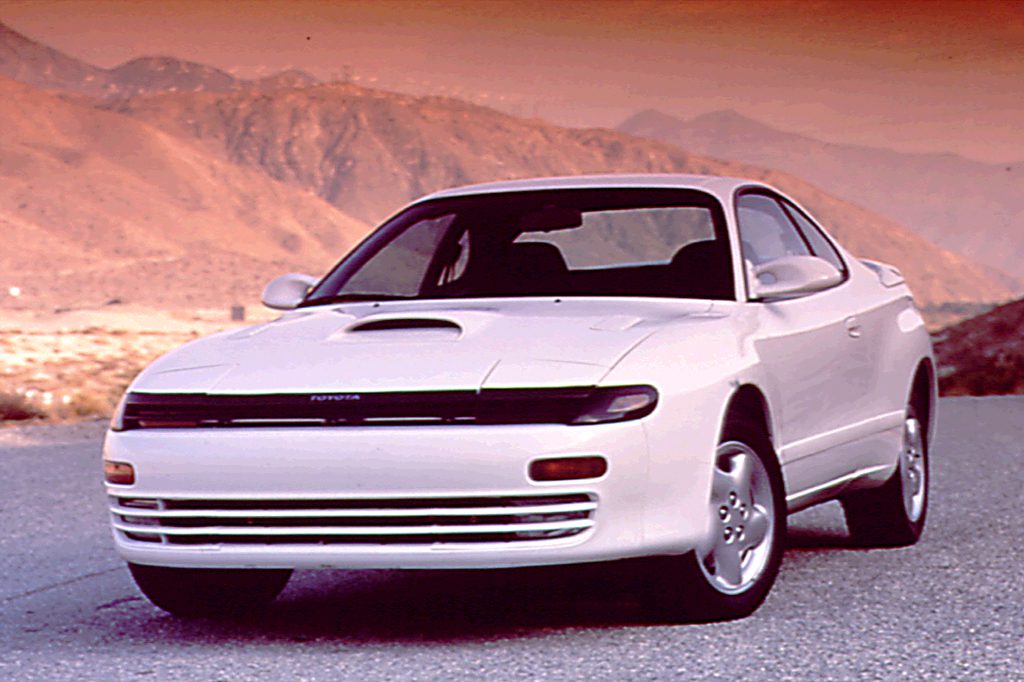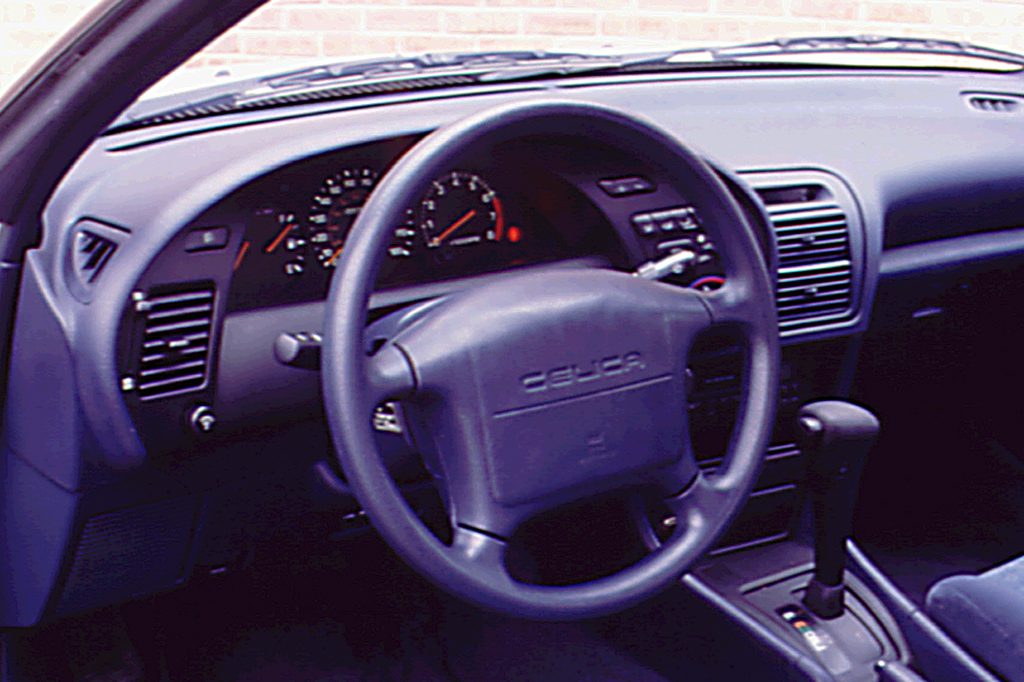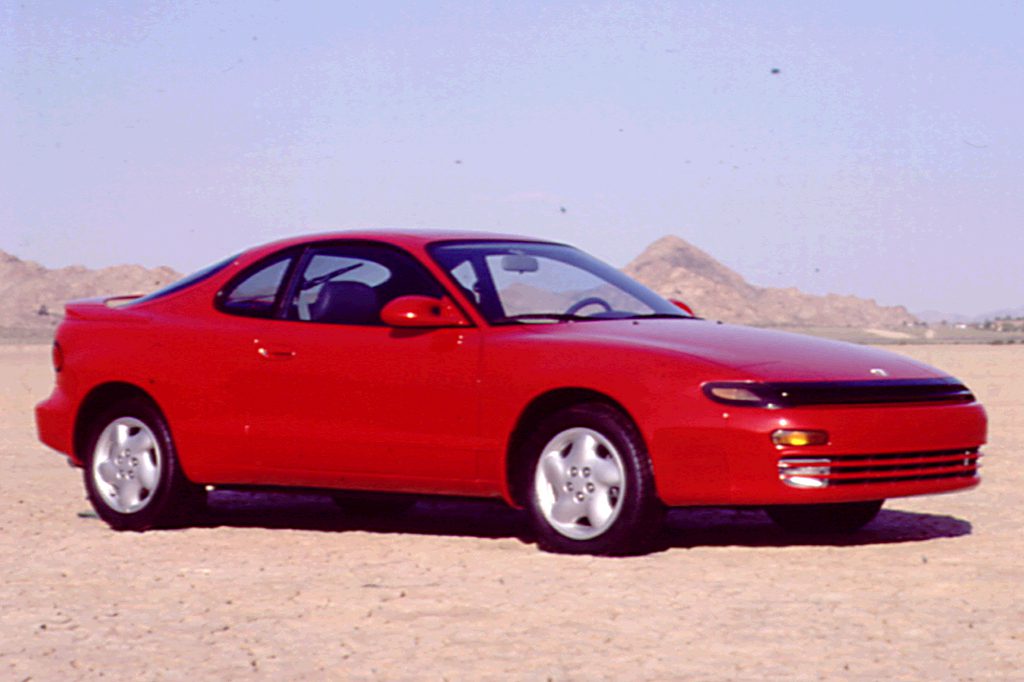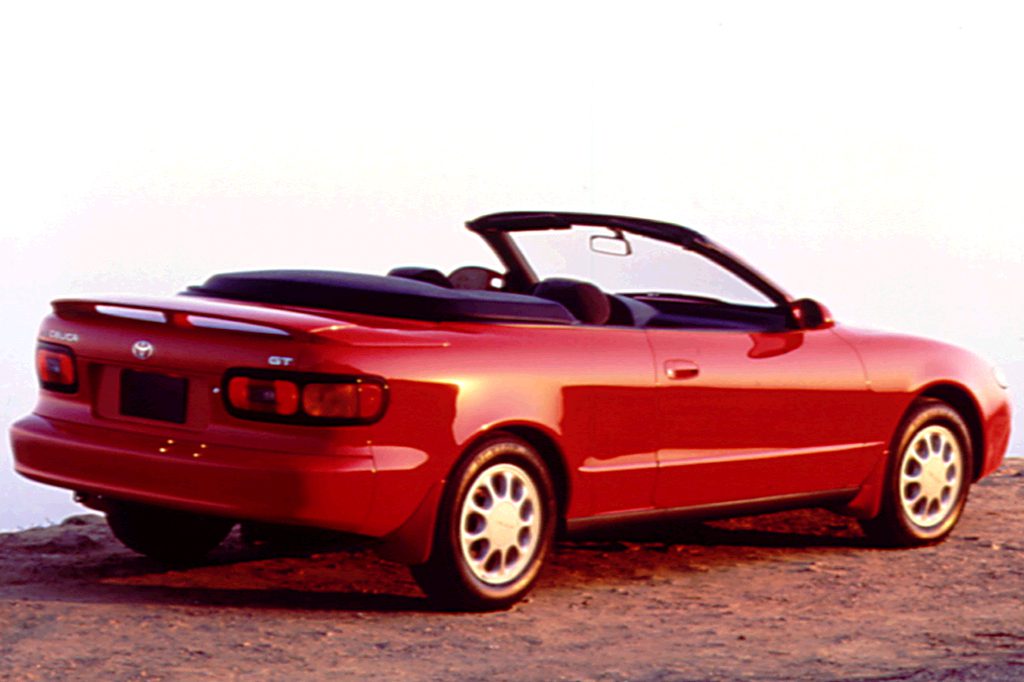| Sporty/performance car; Built in Japan |
|
|
| Good condition price range: $1,000 – $2,600* |

1990 Toyota Celica All-Trac 2-door hatchback

1990 Toyota Celica interior

1991 Toyota Celica GT 2-door convertible

1992 Toyota Celica 2-door hatchback

1993 Toyota Celica GT 2-door convertible
| Pros: |
|
| Cons: |
|
Like most Toyotas, Celicas are well-built. They’re also reliable, and serve as models of ergonomic intelligence.
Overview
Curvaceously restyled for 1990, Toyota’s sports coupe rode the same front-drive wheelbase as the prior Celica generation. A 2-door coupe and 2-door hatchback went on sale. Two new engines debuted, and a driver-side airbag went into all Celicas. The base engine was a twin-cam 1.6-liter 4 cylinder. The Celica GT and GT-S carried a new 130-horsepower, 2.2-liter 4-cylinder engine. Most Celica models were front-wheel drive, with either 5-speed manual shift or a 4-speed automatic. The All-Trac (permanently engaged 4-wheel-drive) edition employed a 200-horsepower, 2.0-liter turbocharged engine and came only with manual shift.
Yearly Updates
| 1991 Celica Coupes and hatchbacks were joined by a convertible for 1991, offered in GT trim with a power-operated top that was covered by a soft tonneau when folded down. |
| 1992 Celica Celicas earned a modest facelift this year, including a reshaped nose, new taillamps, and larger wheels/tires for ST and GT models. Availability of antilock braking expanded to the GT coupe. Both GT models had a standard rear spoiler. |
| 1993 Celica Antilock brakes became standard on the top-line Celica All-Track, and optional on the GT convertible. Few other changes were evident in what would be the Celica’s final season in this form. |
